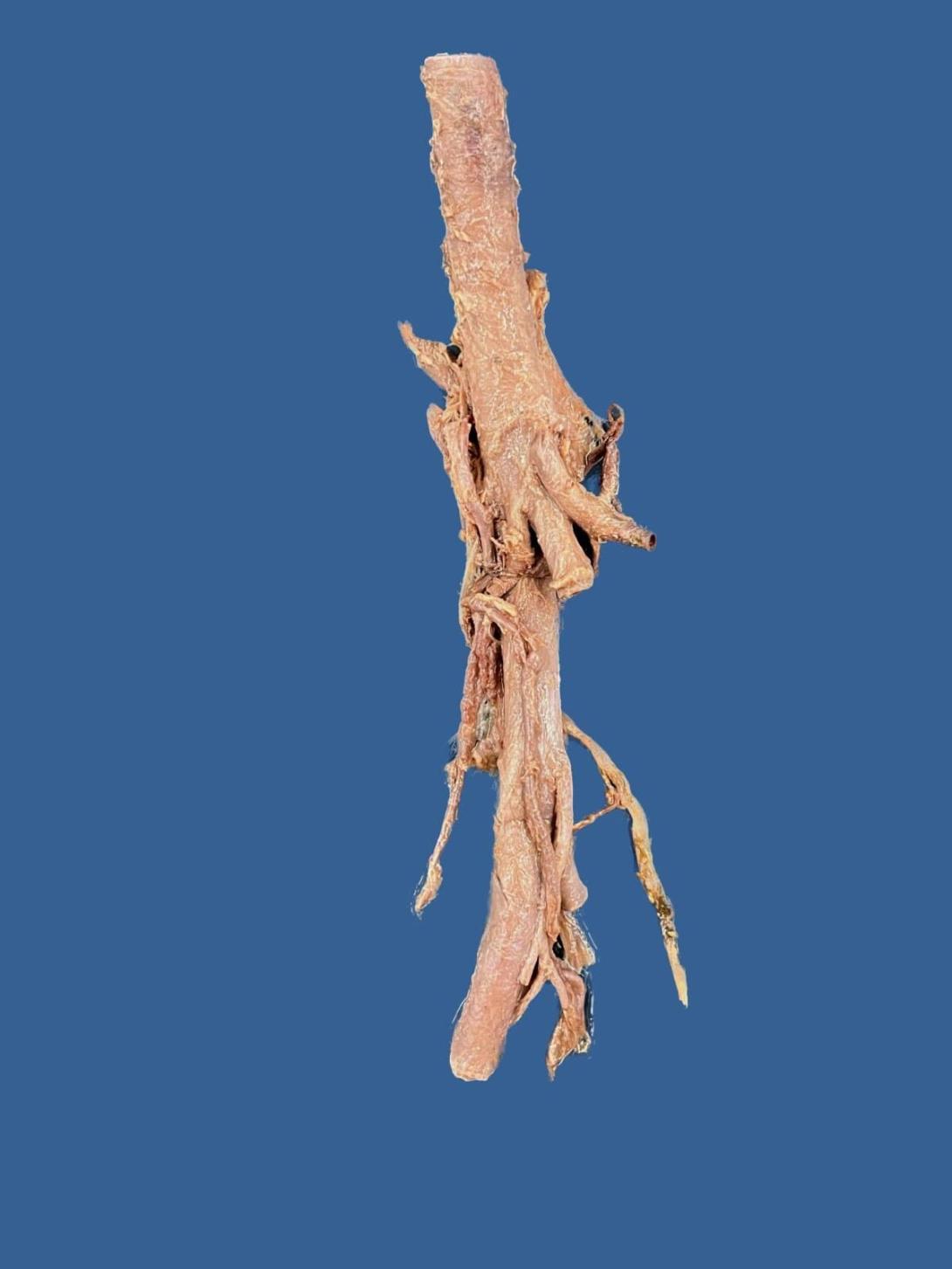The aorta is the largest artery in the body, initially being an inch wide in diameter. It receives the cardiac output from the left ventricle and supplies the body with oxygenated blood via the systemic circulation.
The aorta can be divided into four sections: the ascending aorta, the aortic arch, the thoracic (descending) aorta and the abdominal aorta. It terminates at the level of L4 by bifurcating into the left and right common iliac arteries. The aorta classified as a large elastic artery, and more information on its internal structure can be found here.
In this article we will look at the anatomy of the aorta – its anatomical course, branches and clinical correlations.
By Edoarado [CC BY-SA 3.0], via Wikimedia Commons
Abdominal Aorta
The abdominal aorta is a continuation of the thoracic aorta beginning at the level of the T12 vertebrae. It is approximately 13cm long and ends at the level of the L4 vertebra. At this level, the aorta terminates by bifurcating into the right and left common iliac arteries that supply the lower body.
Branches
In descending order:
- Inferior phrenic arteries: Paired parietal arteries arising posteriorly at the level of T12. They supply the diaphragm.
- Coeliac artery: A large, unpaired visceral artery arising anteriorly at the level of T12. It is also known as the celiac trunk and supplies the liver, stomach, abdominal oesophagus, spleen, the superior duodenum and the superior pancreas.
- Superior mesenteric artery: A large, unpaired visceral artery arising anteriorly, just below the celiac artery. It supplies the distal duodenum, jejuno-ileum, ascending colon and part of the transverse colon. It arises at the lower level of L1.
- Middle suprarenal arteries: Small paired visceral arteries that arise either side posteriorly at the level of L1 to supply the adrenal glands.
- Renal arteries: Paired visceral arteries that arise laterally at the level between L1 and L2. They supply the kidneys.
- Gonadal arteries: Paired visceral arteries that arise laterally at the level of L2. Note that the male gonadal artery is referred to as the testicular artery and in females, the ovarian artery.
- Inferior mesenteric artery: A large, unpaired visceral artery that arises anteriorly at the level of L3. It supplies the large intestine from the splenic flexure to the upper part of the rectum.
- Median sacral artery: An unpaired parietal artery that arises posteriorly at the level of L4 to supply the coccyx, lumbar vertebrae and the sacrum.
- Lumbar arteries: There are four pairs of parietal lumbar arteries that arise posterolaterally between the levels of L1 and L4 to supply the abdominal wall and spinal cord.
By TeachMeSeries Ltd (2023)
Fig 4 – The abdominal aorta and its major branches.

